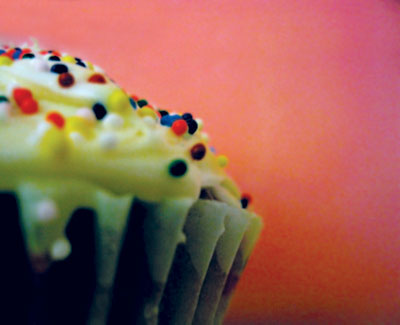All Nonfiction
- Bullying
- Books
- Academic
- Author Interviews
- Celebrity interviews
- College Articles
- College Essays
- Educator of the Year
- Heroes
- Interviews
- Memoir
- Personal Experience
- Sports
- Travel & Culture
All Opinions
- Bullying
- Current Events / Politics
- Discrimination
- Drugs / Alcohol / Smoking
- Entertainment / Celebrities
- Environment
- Love / Relationships
- Movies / Music / TV
- Pop Culture / Trends
- School / College
- Social Issues / Civics
- Spirituality / Religion
- Sports / Hobbies
All Hot Topics
- Bullying
- Community Service
- Environment
- Health
- Letters to the Editor
- Pride & Prejudice
- What Matters
- Back
Summer Guide
- Program Links
- Program Reviews
- Back
College Guide
- College Links
- College Reviews
- College Essays
- College Articles
- Back
History of Baking
In High school I learned all about the history of baking. My technology school teacher spent a long time teaching us this information.
Baking has a very long history and it starts with bread. Bread has a history that dates back 8,000 years. The flour was created by crushing grains with stone tools. It came out very crude. It was mixed with water then shaped. It was cooked on a flat stone over a fire. The bread created was very hard. Bread was later improved by the Egyptians who discovered yeast. They figured out that the yeast fermented which caused it to rise and light textured bread was created.
The Egyptians became experts in growing wheat which allowed them to export it in surplus to Greece. With the flux of wheat, the Greeks became the master bakers of their time. When the Romans conquered the Greeks they turned baking into a profession. In Second Century B.C., all Romans, except the wealthy started using professional bakers instead of making their own bread.
Soon a college was organized to teach and refine the knowledge which had government rules and regulations which they were required to follow. The only reason we know this is because evidence of these colleges, shops and public ovens where found by the lava flows and ash that preserved Pompeii in 79 A.D.
Baking progressed further with the invention of the first mechanical dough mixer. A man of Greek descent in Rome, named Virgilius Euryasaces created it. The mixer consisted of a stone bowl with wooden paddles that were pulled in circles by donkeys.
The Romans graded their grain. Finer & white bread were for nobility, whole wheat was for the masses, and rough grain was for slaves, convicts and the navy. When they arrived in Britain they were so horrified by the poor quality of local bread that they had their own shipped over from Rome.
After the Romans left Britain there was little progress in the production of bread, reflecting the other aspects of civilization during the dark ages. The Normans invade Britain and a renewed activity in baking occurs and in 1191 the first use of a windmill for flour is found.
Early Norman bread tended to be large, round and flat. They used the bread for two purposed; a plate and food. They called their bread “trenchers” because it soaked up the fats and juices from the various meats that were eaten. The expression “To be a good trencherman” was first used to describe a man who could eat his dinner and his trencher or plate as well.
Britain bakeries steadily increased in numbers and the first of guilds known as “The Fraternity of St. Clement of the Mystery of Bakers” is founded. St. Clement is the patron saint of bakers which is where the name came from. The guild took on apprentices. They would go through seven years of apprenticeship and journeyman status until one could be a “master” baker.
As the guild grew in size they also grew in importance. They applied for a charter form King Henry VII in 1486. To protect their reputation and payment to the King for the charter, they agreed to bake an extra “makeweight” loaf for every dozen. This is where we get the expression “A baker’s dozen.”
In the 16th century, Catherine de Medici of Italy marries King Hery II of France and brings with her a brigade of bakers to Paris. These bakers bring with them formulas and skills for the baking of cream puffs, cream custards, éclairs, tarts and macaroons. This introduced France to the world of pastry arts.
In 1780 a school was opened in Paris and pastry baking became a specialized art, setting itself apart from the art of bread making. Following this school in 1895, the famous Le Cordon Bleu is founded. This is the start of modern baking.
As the world expanded and people started to settle in the New World they found out that Indians had cultivated a wild grass which was gradually developed into a valuable crop called Indian corn or maize. The first settlers found out how valuable this crop was when they found out wheat was not easy to grow throughout the eastern coastal region. The Colonists also shared recipes. This is where a Johnny Cake comes from. It is a corruption of the Journey Cake that originated from the provisions of cornmeal carried by the Indians. These Johnny Cakes were the start of American Baking.
The History of Baking starts with European and is brought over to the Colonies. The colonists didn’t really know how to bake as efficiently as some of the other countries in the world, but they figured out their own style from what they knew of the baking of breads from the European’s history of baking. The history of baking is very long and a big part of the world.

Similar Articles
JOIN THE DISCUSSION
This article has 0 comments.
